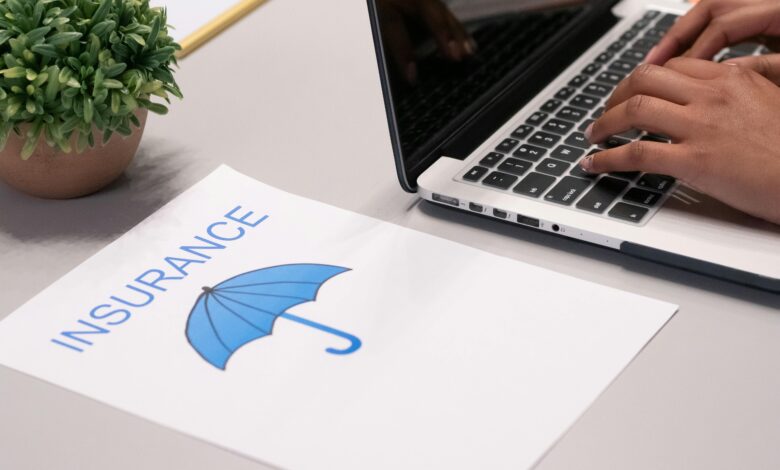Understanding Homeowners Insurance: What’s Covered?

Homeownership is a significant milestone in life, but it also comes with responsibilities. One of the most critical aspects of owning a home is ensuring that it is adequately protected against unforeseen events. This is where homeowners insurance comes into play. While many homeowners understand the importance of having insurance, few fully grasp what their policy covers and how it works. In this comprehensive guide, we will delve into the intricacies of homeowners insurance, exploring what is typically covered, what isn’t, and how you can make the most of your policy.
What is Homeowners Insurance?
At its core, homeowners insurance is a contract between you (the homeowner) and an insurance company. In exchange for paying a premium, the insurer agrees to provide financial protection against specific risks or damages to your home and personal property. It also offers liability coverage in case someone is injured on your property.
Homeowners insurance is not just a safety net; in many cases, it is a requirement. If you have a mortgage, your lender will likely mandate that you carry homeowners insurance to protect their investment. Even if your home is paid off, having insurance is still highly advisable to safeguard your assets.
Key Components of Homeowners Insurance
A standard homeowners insurance policy typically consists of several key components. Let’s break them down:
1. Dwelling Coverage
This is the backbone of any homeowners insurance policy. Dwelling coverage protects the structure of your home, including the walls, roof, floors, and built-in appliances like HVAC systems. If your home is damaged by a covered peril—such as fire, windstorms, or vandalism—the insurance company will pay for repairs or rebuilding costs, up to the policy limit.
- Example: A tree falls on your roof during a storm, causing significant damage. Your dwelling coverage would help cover the cost of repairing or replacing the roof.
2. Personal Property Coverage
This part of the policy covers your belongings, such as furniture, electronics, clothing, and other personal items. It applies whether the damage occurs inside or outside your home. For instance, if your laptop is stolen while traveling, your personal property coverage may reimburse you.
- Limitations: Most policies have limits on high-value items like jewelry, art, or antiques. You may need to purchase additional riders or endorsements for these items.
3. Liability Protection
Liability coverage protects you financially if someone is injured on your property or if you accidentally cause harm to others. It can cover medical expenses, legal fees, and court-awarded damages.
- Example: A guest slips on your icy driveway and breaks their leg. Liability coverage would help pay for their medical bills and any potential lawsuit.
4. Additional Living Expenses (ALE)
If your home becomes uninhabitable due to a covered loss, ALE coverage pays for temporary housing, meals, and other living expenses while your home is being repaired.
- Example: After a fire, you need to stay in a hotel for two months. ALE coverage would reimburse you for the hotel costs and restaurant meals.
5. Other Structures Coverage
This covers structures on your property that are not attached to your home, such as fences, sheds, garages, and driveways. The coverage limit is usually a percentage of your dwelling coverage.
What Does Homeowners Insurance Typically Cover?
Homeowners insurance policies generally protect against a range of perils. Here are some of the most common covered events:
1. Fire and Smoke Damage
One of the primary reasons people purchase homeowners insurance is to protect against fire and smoke damage. Whether caused by an electrical malfunction, lightning strike, or accidental kitchen fire, your policy will typically cover the cost of repairs or rebuilding.
2. Windstorms and Hail
Damage from windstorms and hail is another standard inclusion. However, coverage may vary depending on your location. For example, in hurricane-prone areas, you might need separate windstorm coverage.
3. Theft and Vandalism
If your home is burglarized or vandalized, your policy will cover the cost of repairing or replacing stolen or damaged items.
4. Water Damage (Limited)
While water damage is often excluded, certain types are covered. For instance, sudden and accidental water leaks (like a burst pipe) are typically included. However, flooding caused by natural disasters is not covered under standard policies—you’ll need separate flood insurance for that.
5. Falling Objects
If a tree falls on your house or debris crashes through your roof, your policy will cover the damage.
6. Freezing
Damage caused by frozen pipes or other freezing-related issues is usually covered, provided you’ve taken reasonable steps to maintain your home (e.g., keeping the heat on during winter).
What Isn’t Covered by Standard Homeowners Insurance?
While homeowners insurance provides broad protection, there are several exclusions you should be aware of:
1. Flooding
As mentioned earlier, floods caused by heavy rain, overflowing rivers, or storm surges are not covered. You’ll need to purchase a separate flood insurance policy, often through the National Flood Insurance Program (NFIP).
2. Earthquakes
Earthquake damage is also excluded from standard policies. If you live in an earthquake-prone area, consider adding an earthquake endorsement or purchasing a standalone policy.
3. Wear and Tear
Insurance does not cover damage resulting from neglect or normal wear and tear. For example, if your roof collapses because it was old and poorly maintained, your claim may be denied.
4. Sewer Backup
Damage caused by sewer backups is typically excluded unless you purchase an optional endorsement.
5. Acts of War
Damage caused by war, terrorism, or nuclear hazards is generally not covered.
How to Maximize Your Homeowners Insurance Coverage
To ensure you’re getting the most out of your policy, consider the following tips:
1. Understand Your Policy Limits
Make sure your dwelling coverage matches the replacement cost of your home, not just its market value. Personal property limits are often a percentage of your dwelling coverage, so adjust accordingly.
2. Inventory Your Belongings
Create a detailed inventory of your personal property, including photos and receipts. This will make filing a claim much easier if disaster strikes.
3. Consider Additional Endorsements
For high-value items like jewelry or collectibles, purchase additional endorsements or scheduled personal property coverage.
4. Review Your Policy Annually
Your needs may change over time, so review your policy annually to ensure it still meets your requirements.
5. Bundle Policies
Many insurers offer discounts if you bundle your homeowners insurance with other policies, such as auto insurance.




